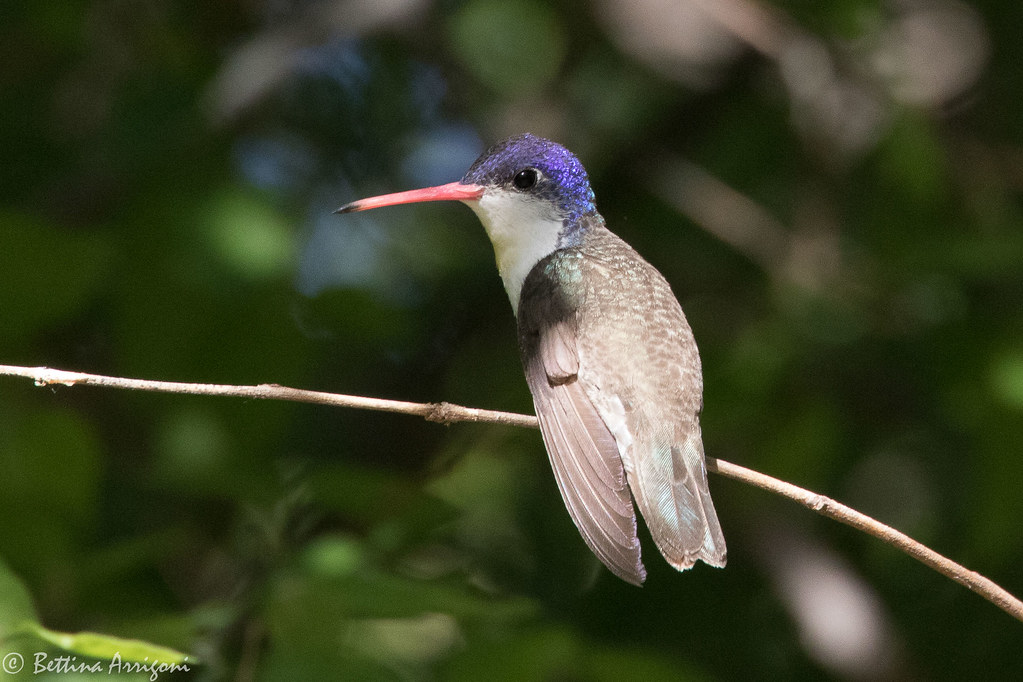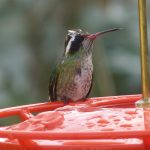Belonging to the “emeralds” tribe Trochilini within the subfamily Trochilinae, the Violet-crowned Hummingbird is a vibrant presence in both Mexico and the southwestern United States, particularly Arizona.
Species Classification and Evolution
Initially grouped under Amazilia, changes based on DNA studies led to its reclassification into Ramosomyia. This bird showcases nature’s adaptability through its evolutionary journey reflected in taxonomic updates.
Physical Characteristics
Adults rock a bright red bill with potential black tips, setting off their violet-blue or crowns depending on the subspecies. They measure about 10 to 11.5 cm long, blending beautifully into their habitats with their coloration.
Geographical and Preferred Environments
The Violet-crowned Hummingbird thrives from southeastern Arizona down into Mexico. In Arizona’s higher elevations up to 1,700 meters, these birds are part of diverse ecosystems, including forests and urban areas, where they bring flashes of color to parks and gardens.
Typical Behaviors
While known for being mostly sedentary in regions like Sonora and Chihuahua, U.S. populations often migrate seasonally. Observations suggest a northward expansion of their range which adds an exciting dynamic to their presence stateside.
Seasonal Movements
Migration patterns are notable in U.S populations while Mexican counterparts show less movement. The adaptability in following food sources highlights their survival strategies amidst changing climates.
Dietary Habits
These hummingbirds primarily sip nectar but won’t pass up small insects either. Their feeding grounds can become competitive when flowers are scarce, showcasing their assertive side in defending resources.
Reproductive Patterns
Breeding season sees nests made from plant down bound by spiderwebs adorned with lichen—a crafty use of available materials! Typically laying two eggs per clutch, details about incubation periods remain somewhat mysterious.
Communication Sounds
Their vocalizations include a series of high-pitched notes used for both mating calls and territory defense—essential for survival among bustling bird communities.
Conservation Status
With an estimated population of two million mature individuals holding strong without immediate threats, they’re classified as Least Concern by IUCN—an encouraging sign for conservationists.
For those enchanted by hummingbirds or simply fascinated by avian life forms adapting across borders from Arizona’s landscapes to Mexican terrains—the Violet-crowned Hummingbird represents nature’s resilience and beauty.


